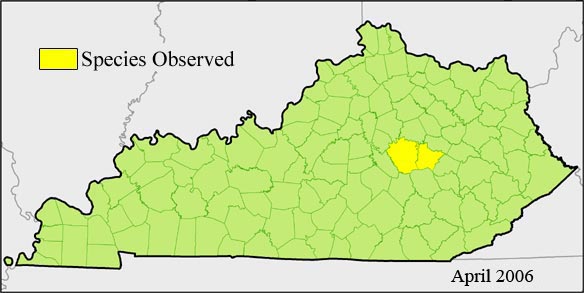P�h�o�t�o� �b�y� �E�d�w�a�r�d� �W�.� �C�h�e�s�t�e�r� �@� �T�E�N�N�
|
Habitat:
Calcareous ledges and woodlands, barrens, and gravels.
|
Species Description:
A finely-branched, erect, perennial shrub.
|
Phenology:
Flowering Period: Early May to late July.
|
Additional Information at NatureServe
|
Diagnostic Characteristics:
This is a small shrub with opposite roundish leaves similar to the common coral berry. It differs in having white fruit and the corolla is a little longer (5-8 mm). The pith of the wood is hollow in S. alba versus continuous in S. orbiculatus.
|
Management:
Disturbance such as ATV trails, timber removal or any activity that results in increased erosion and weed invasion will be detrimental.
|
Global Range:
It is distributed throughout North America with the exception of Mexico. The plant may be found associated with FESTUCA IDAHOENSIS or CRATAEGUS on north-facing slopes in the Palouse region of eastern Washington and northern Idaho (Daubenmire 1970, Allen et al. 1980). In the Blue Mountains of northeastern Oregon, S. ALBUS is found with FESTUCA IDAHOENSIS, AGROPYRON SPICATUM, POA SANDBERGII, and CAREX GEYERI in grasslands and as an element of the understory in Ponderosa pine forests (Holechek et al. 1982). S. ALBUS also occurs in Douglas fir zones of southern British Columbia (McLean 1969). Agee and Dunwiddie (1984) found S. ALBUS in two habitats on Yellow Island in Puget Sound, Washington: (1) in woodlands associated with madrone, Oregon white oak, and invading Douglas fir and (2) as an element of the understory in Douglas fir- madrone-grand fir forests. According to Munz and Keck (1968), S. ALBUS is found on banks and flats in canyons and near streams below 4,000 feet in mixed evergreen forests, foothill woodlands, yellow pine forests, etc., of the Coast Ranges of California from Monterey County north and northern Sierra Nevada to Alaska.
|
Known Kentucky Occurrences:

|